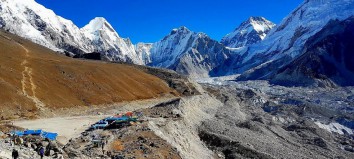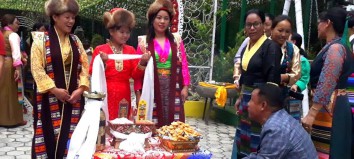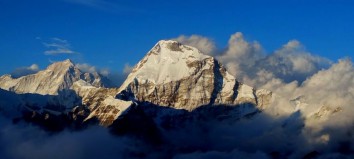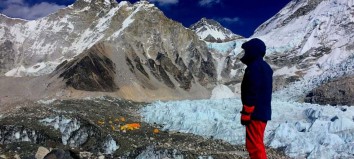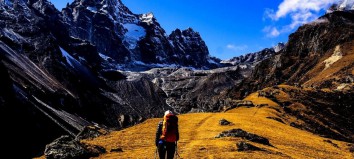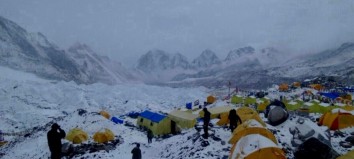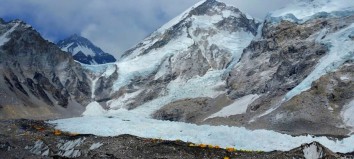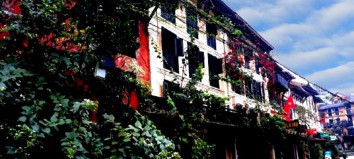Attractions of Bhaktapur
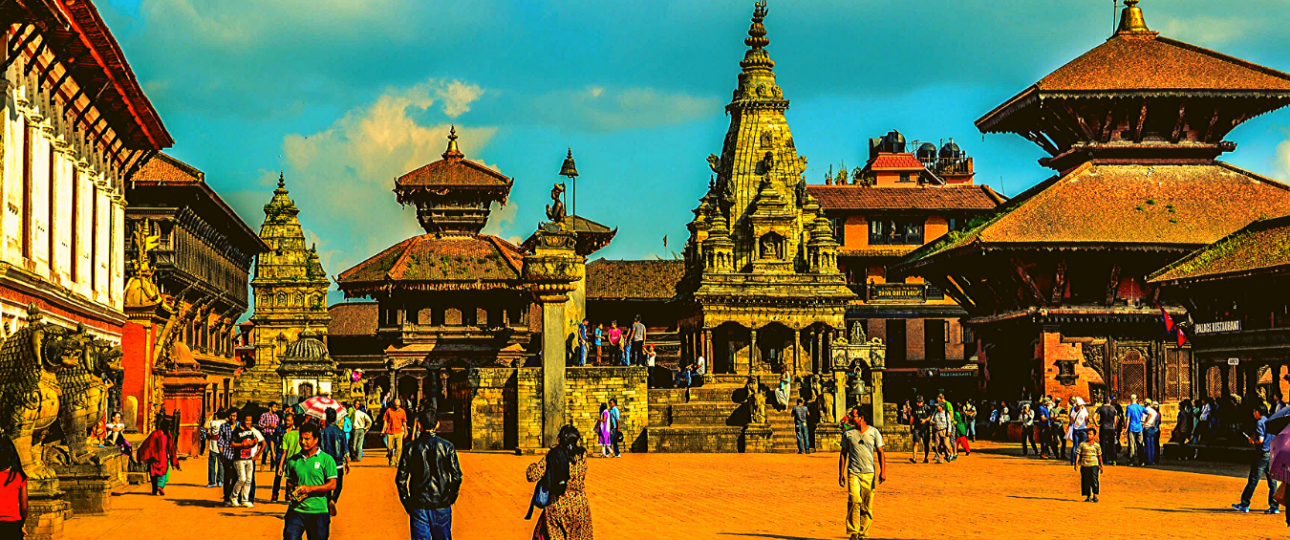
Bhaktapur Golden gate:
Bhaktapur is about 12 km. east from the Kathmandu valley. After the Kathmandu valley tour. You can visit Bhaktapur. Bhaktapur Golden gate at Bhaktapur was built in 1753 By King Ranjit Malla. This is a little bit outside of Kathmandu valley tour. This gate serves as the entrance of the courtyard where the Bhaktapur Palace lies.
 The most fascinating part of the Bhaktapur gate is the architecture that was abundant in the Malla dynasty. Great sculptures like Araniko works and produce the finest crafts in that period.
The most fascinating part of the Bhaktapur gate is the architecture that was abundant in the Malla dynasty. Great sculptures like Araniko works and produce the finest crafts in that period.
On the top of the door of Bhaktapur Gate is embed with Goddess Kali and a mythical bird which represent Garuda. This masterpiece is an example of fine craftsmanship and the gate is made up of copper with emblems of deities of Hindus such as Lord Ganesh, Bhairav, Kumari, Bhagwati and above the door the carving of Goddess Lakshmi the Goddess of Wealth and abundance.
The Golden gate of Bhaktapur is a popular spot for tourist attractions from all parts of the World. The grand design of Bhaktapur Place with fifty-five windows is so beautiful and rich in the texture of artistic work which leaves up to you to uncover when you arrive at Bhaktapur Durbar Square in Nepal.
55 Windows Durbar:
 The 55 Windows Durbar also popular as Pachpanna Jhyale Durbar in Nepali is at the old City of Bhaktapur, Nepal which is build by King Bhupatindra Malla in 1677.
The 55 Windows Durbar also popular as Pachpanna Jhyale Durbar in Nepali is at the old City of Bhaktapur, Nepal which is build by King Bhupatindra Malla in 1677.
The Palace is center over a space built around a number of inner courtyards link together. The 55 windows Durbar is a masterpiece of fine craftsmanship and makes from traditional woodcraft of the seventh century.
During the era of Malla kings, it serves as a dwelling of Royal families. Today you will find the 55 Windows Durbar as a national gallery that has thangkas, paintings, historical manuscripts. 55 windows durbar surrounding is visiting by locals, domestic and foreign tourists due to its attractive traditional architecture and handicrafts.
The rich legacy of Mallas proved that arts and architecture also existed since the early days of Nepal and the Kings loves creating the monuments from the hands of skill craftsman which now is a center of attraction for many people.
Including the younger generations who are keen to follow the same footsteps of the older generation that have contributed immensely and create a rich historic legacy the source of inspiration.
Nyatapola temple:
 Nyatapola Temple is a pagoda-style temple built by King Bhupatindra Malla at Taumadhi square in the City of Bhaktapur. Hence, the terms Nyatapola means “five stepped roofs”. So it is a five-tiered structure made of bricks and wood. The temple is the incarnation of Bhairav and in honor of Goddess Siddhi Lakshmi incarnation of Goddess Durga. It was built in 1702. It is the main attraction spot in the Bhaktapur square area.
Nyatapola Temple is a pagoda-style temple built by King Bhupatindra Malla at Taumadhi square in the City of Bhaktapur. Hence, the terms Nyatapola means “five stepped roofs”. So it is a five-tiered structure made of bricks and wood. The temple is the incarnation of Bhairav and in honor of Goddess Siddhi Lakshmi incarnation of Goddess Durga. It was built in 1702. It is the main attraction spot in the Bhaktapur square area.
Many tourists come to Bhaktapur and witness the high structure of Nyatapola temple and the Courtyard where there are local shops and handicrafts sold and chariot runners piled up on the Northside of the temple. Often, people gather together to hangouts. The staircase with gargoyles of deities and angels lead into the main entrance of Nyatapola temple.
This temple has a height and dominates the view from the rest of the structures. Nyatapola temple is one of the significantly historic places that speak volumes of the culture of the Malla dynasty therefore their astute belief in God and Goddesses to ward off evil spirits and negativity. It brings blessings to their family and the people who believed in the divine protection of God.
Bhairav Temple:
 Bhairav temple is one of the major attractions of Bhaktapur City. It is located in the same compound as Nyatapola Temple. The fables of the origination of Bhairav temple tells that Bhairav of Kashi comes to see the Bhadrakali Chariot festival to whom the last king of Suryavanshis who survives the attack of his wife has request him to stay forever but after Bhairav had disobeyed the request, the king used the black magic and hypnotize Bhairav in his spell and cut the throat of Bhairav after he was caught trying to escape and was kept there. The temple build earlier by King Jagajyothi Malla which is also popular as Akaash Bhairav Temple.
Bhairav temple is one of the major attractions of Bhaktapur City. It is located in the same compound as Nyatapola Temple. The fables of the origination of Bhairav temple tells that Bhairav of Kashi comes to see the Bhadrakali Chariot festival to whom the last king of Suryavanshis who survives the attack of his wife has request him to stay forever but after Bhairav had disobeyed the request, the king used the black magic and hypnotize Bhairav in his spell and cut the throat of Bhairav after he was caught trying to escape and was kept there. The temple build earlier by King Jagajyothi Malla which is also popular as Akaash Bhairav Temple.
Later it was again further constructed by adding three stories to the structure in 1661 A.D. by King Bhupatindra Malla. Today the Bhairav Temple has many Hindu devotees who worship Lord Bhairav and on the day of Bisket Jatra in the months of Mid April, the chariots of Bhairav haul around the town. The exterior has two brass lions holding the Nepali flag along with Bhairav on rattan with gruesome garland. Bhairav Temple is the main idol of Bhaktapur Durbar Square.
Along the perimeter of this temple, the elaborate Bhaktapur Durbar was constructed by the Malla King. During that time where arts and architecture flourish and many craftsmen do their fabulous piece of work and some are the masterpiece. This temple is one of the main spots where tourists come close to the religious and cultural aspects of traditional Nepal and Nepalese. It falls under the category of World Heritage Sites marked by UNESCO.
